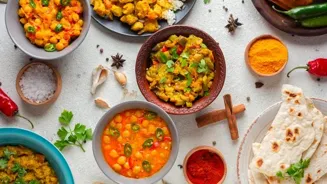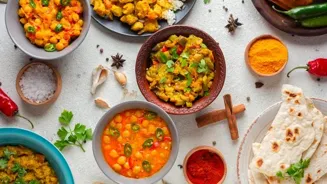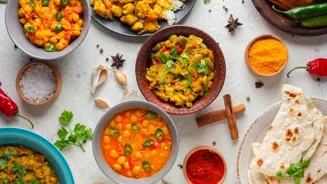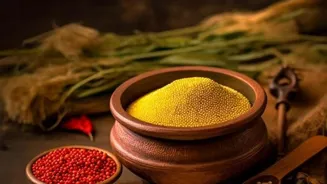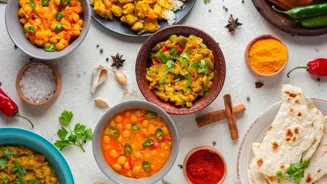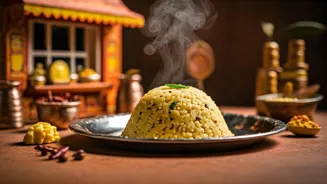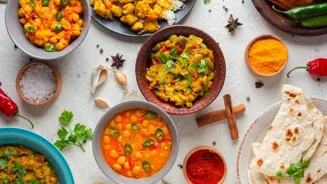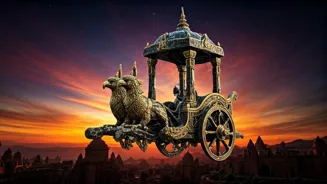Unveiling the Spice Trade's Impact on Indian Cuisine - A flavorful journey through time. Explore the aromatic legacy!
India, the land of vibrant colors, rich culture, and diverse traditions, is also renowned
for its captivating cuisine. The magic behind this culinary tapestry lies in the intricate use of spices. But have you ever wondered how these spices became an integral part of Indian food?
The answer lies in the fascinating journey of the spice trade, a historical saga that profoundly shaped the flavors and aromas we associate with Indian cooking today.
India's historical significance as a spice hub attracted traders globally
The story begins centuries ago, with India holding a position of global importance as the "Spice Garden of the World." Naturally producing spices such as cardamom, cinnamon, turmeric, and pepper, India became a focal point for traders from far and wide.
Ancient civilizations, including the Egyptians, Romans, and Arabs, were drawn to India's aromatic treasures. These traders embarked on long and challenging journeys, braving treacherous seas and harsh terrains, all in pursuit of these valuable commodities.
The demand for Indian spices was driven by their use in flavoring food, preserving edibles, and even medicinal properties. The exchange of spices opened new avenues for cultural exchange, leading to the adoption of new ingredients and cooking techniques.
European arrival in India transformed spice trade; competition led to British dominance, sparking culinary innovation
The arrival of the Europeans in India marked a turning point in the spice trade. The Portuguese, followed by the Dutch, French, and British, sought to gain control over the lucrative spice routes. This led to intense competition and conflicts among these European powers.
The British East India Company eventually gained dominance, establishing a vast empire that further intensified the spice trade. Spices were transported in large quantities to Europe, where they became highly sought-after luxury goods. The impact of this trade extended beyond the economic realm.
The introduction of new ingredients, combined with existing Indian culinary traditions, sparked a wave of innovation and experimentation in Indian kitchens.
Spice trade shaped diverse regional cuisines in India
The spice trade not only influenced the ingredients used in Indian cooking but also shaped the cooking styles. Regional variations in the use of spices became more pronounced, leading to the diverse range of cuisines we see across India today.
For example, the coastal regions of South India, influenced by maritime trade, embraced the use of coconut milk and seafood in combination with spices. In contrast, the northern regions, with their Mughal influence, developed rich and creamy curries with aromatic spice blends.
Each region developed its unique spice palette, creating a culinary landscape that is as diverse as the country itself.
The enduring influence of spices in Indian cuisine
The legacy of the spice trade continues to resonate in Indian cuisine today. Spices remain an indispensable part of Indian cooking, providing depth, complexity, and a unique character to every dish.
From the fiery curries of Rajasthan to the subtly flavored dishes of Kerala, spices are the common thread that connects the diverse culinary traditions of India.
The knowledge of spice blends and their specific uses has been passed down through generations, preserving the authenticity and cultural heritage of Indian food. The impact of the spice trade can also be seen in the global popularity of Indian cuisine.
As Indian food has spread across the world, its unique flavors and aromatic spices have captivated palates, making it one of the most loved cuisines globally.
Spice trade shaping Indian cuisine through history
The journey of the spice trade is much more than a historical account of economic exchange. It is a story of cultural exchange, culinary innovation, and the enduring legacy of spices in shaping Indian cuisine.
From ancient trade routes to modern-day kitchens, spices have played a pivotal role in defining the flavors and traditions of India. As we savor each bite of Indian food, we are reminded of the rich history and vibrant heritage that lies within every spice.
AI Generated Content. Glance/InMobi shall have no liability for the content